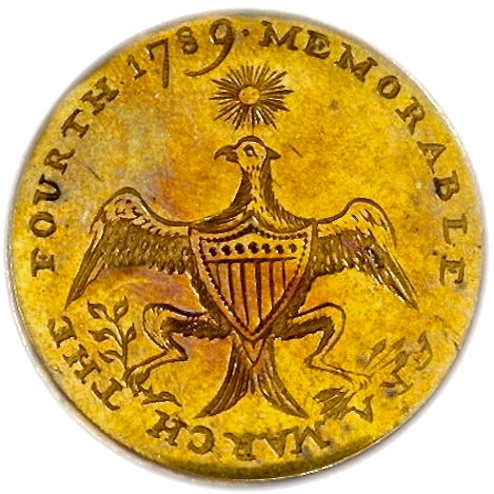Understanding the Metallurgy
Mixes for Artisan Based Metal Relics
This Section is to Help Identify A Relic’s Metal Composition & Preserve it
******* ******* *******
******* *******
I wrote this section for all the wonderful Metal Detector Hobby Friends who have continually written in with their prideful button finds looking to find answers about preservation or restoration. We hope this section will act as a quick reference guide to help them diagnose the metal memorabilia found. So, we humbly offer this page in hopes of expanding your knowledge, and provide you with choices and avenues for the Best way for you to proceed in the preservation or restoration of your find. You will be able to use many of the advanced preservation techniques in the chart below, but I humbly ask you Do Not Do Any Kind Of Preservation Methods to GWI or NNT buttons. Military buttons, especially Civil War buttons were made to be polished on their uniforms constantly, so you can take solvents easily as described in the chart below and be successful. Good luck hunting this year, and please keep contributing your Wonderful Pictures to make our hobby community a true Heaven for collectors and friends who like to share Metal Detecting and their collections.
Section I: Blank Metal Disc:
A Planchet is the numismatics’ name given to a fabricated blank metal disk that is usually made through the act of combining different metals together (Metallurgy) then treated through the action (heat degree) of a furnace. This process was modified for thousands starting from the ancient Egyptian Bronze age to later Europeans who produced stronger metals such as: Brass, Bronze, and Copper. There is also the pure elements (or diluted elements) such as, Silver or Gold that was used for the manufacturing of coins or buttons. In the late 18th Century, Alchemy and Blacksmithing was a carefully guarded skill that was held by skilled artisans and their knowledge in metal crafting was carefully guarded from the general public. In several cultures it was customary for a blacksmith to live away from the population, and handing down their knowledge and skills through their family.
Metallurgy Mixes for Blank Planchets:
Brass: is a yellow alloy of Copper and Zinc.
Bronze: is a yellowish alloy of Copper with up to one-third Tin. (This was the 2nd metal to be used by humans).
Copper: is a red-brown metal. The chemical element is represented by the atomic number 29, periodic symbol Cu. (The first metal to be used by humans).
Gold: is a yellow precious metal. The chemical element is represented by the atomic number 79, periodic symbol Au. If a button is said to have a Gilt surface, this refers to a Gold Leaf or Gold-Wash (Paint) that was applied after the button was fabricated. This melted Gold-Wash is either applied or brushed onto the surface. A button maybe be completely made of Gold also.
Pewter: is a gray allow of Tin with Copper and Antimony (Formally Tin and Led).
Silver: is a shiny white-grayish metal, chemical element of the atomic number 47, periodic symbol Ag. When a button is said to be Silvered, or have a Silver-Wash (White Washed) it is referring to a thin coating of Silver that is applied or brushed onto the surface. A button might be completely made of Silver also.
Tin: is a malleable silvery metallic element obtained chiefly from Cassiterite. It is primarily used to coat other metals to prevent corrosion. The Atomic number 50.
Section II: Steel Die Making
Engravers, Blacksmiths and Manufacturers:
The art of engraving steel dies by various Artisan Engravers hasn’t really changed in 250 years. It wasn’t until the introduction of pneumatic air tools that changed the engraving art for the better. In both Colonial and Post-Colonial times an engraver would go to a blacksmith to have his various tools made. There were several width size tools that were used, and they were tempered by the action of a furnace to be stronger then the soft metal they engraved in. To ensure that the engraver’s steel rod tool’s tips would not break or dull, a blacksmith who was skilled in the art of Alchemy and Metallurgy would be hired to forge and temper the tips many times to achieve a desired hardness. With these strengthened / tempered tools, the engraver would cut a pattern into a soft round steel hub die. After the pattern was completely cut the steel die hub was given back to the Blacksmith to temper & fire repeatedly. This temper process would make the steel die super strong for stamping out patterns on soft metal planchets. This steel die hub had to stand up to multiple strikes or the pressures of machine rollers without degrading the pattern. So in a nut shell, the engraver used a harder steel tool to cut into a softer steel. Then the steel hub would be fired to full strength to use in production.
Section III: Preserving Metal Detector Finds for Brass, Bronze, Copper, Aluminum, & Pewter
******* ******* *******
*
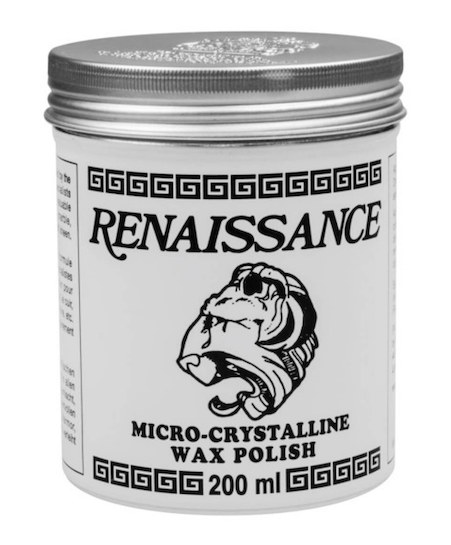
How to Cease and Prevent Further Deterioration and Corrosion on Metal objects Dug in Farm Fields, Cellar Holes, and Wet Sandy Soil.
******* *******
*
This is the only Method I Recommend for Button Collectors as of May 2020
The most important consideration for a metal detector hobbits is to ascertain the environment they dug their relic. The relic’s dug state of condition is determined by the ground’s environmental factors in which it was dug. We all would like to find our treasures in nice wet sandy soil keeping the relic in a hibernation state slowing the process of disintegration. Unfortunately, this just isn’t possible. Most will be found on farmlands and fields in-which the soil was treated with chemical fertilizers and nitrogen based products that eat out the core of the metal and often leads to it’s disintegration as oxygen is its chief enemy.
Renaissance Wax is a high-quality blend of refined micro-crystalline wax that remains neutral. It is often used in antique restoration and museum conservation for preserving metal objects. Often used to protect armor and weapons.
Renaissance Wax effectively cleans and polishes all solid surfaces including metal, wood, marble, onyx, shell, stone, ivory, plastic, leather and even paper, neither staining nor discoloring. It has high moisture resistance, and can be used to protect paper book covers from finger prints and as a protective coating on photographs. Reduces gloss of picture varnish and prevents blooming. Also adds luster to water colors and other works on paper.
In accelerated aging tests, scientists at the British Museum found that all current commercial waxes based on the usual natural waxes (beeswax and carnauba wax) contained acids which, in time, could spoil original finishes. Renaissance wax is manufactured using new ‘fossil’ or microcrystalline waxes being refined out of crude oil. With their distinct characteristics depending on their geographical origins, the new ‘man-made’ waxes could be accurately blended to meet the needs of modern conservation. Thus, the waxes combined Nature’s best qualities with the advantages of modern technology.
Link for Purchase: Https://www.talasonline.com/Renaissance-Wax
*******
Other Time Honored Methods
The list of means that protectorates are used is listed below. All of these treatments are used by Metal Detector Hobbyists who choose not to use the Time Honored Tradition of Air tight Containers. The proven science is that Air (Ox2) is the worst agent to metal relics once removed from it’s hibernating layer of slow protecting soil. Oxygen and airborne chemicals react with the metal’s surface to turn it’s once smooth surface into flaky or a chipping surface which can become riddled with Microporous attributes. The most common form of exhibited deterioration found on dug relics with corrosion is transition to Rusty metal. What exactly is rust? Rust is the result of moist air interacting with iron and steel to form hydrated ferric oxide. The good news is that if properly treated in a timely manor the damage could be reversed. Hunters should note that Galvanized metals will also rust, but at a much slower rate then unprotected surfaces. Brass, Silver, and Bronze tarnish as they interact with Air, and the man made pollutants contained in the atmosphere. Relic hunters have noted that Aluminum oxidizes into a white powder, but the good news is that the powder acts as agent and binds chemically to the metal underneath which acts as a barrier for further corrosion. Please remember, if you have never tried any of these process, use objects that have no value as a learning lab for yourself. If you are attempting to create value instead of preservation for the relic’s dug nature you must be very well acquainted with the process you choose. Meaning, no need to try things out on your most cherished finds immediately. Watch how your practice sample with similar Metallurgy reacts, take mental notes, and give it a “few days” sometimes weeks, or months to see how everything faired. Air Tight containers is the only thing we recommend! To many historic relics have been destroyed even under the Best intensions.
*******
All are acceptable means for treating Metal Detector finds such as, Copper, Brass, Bronze, and Aluminum, Iron, and Steel.
Urethane Paint
Epoxy Varnish
Poly Urethane Varnish
Acrylic Lacquer
Acrylic or Paste Wax
Mineral or Linseed Oil is not recommended on Brass, Copper, or Bronze.
*******
Antique Pewter Relics
Pewter is a metal alloy that is used to produce home decor items, jewelry, 18th Century buttons, and tableware. Pewter first came into common usage in the Middle Ages when it was the chief material used to fashion tableware. Made mostly from tin, pewter can also consist of copper, antimony, bismuth, and lead. A malleable alloy, pewter can be molded, hammered, stamped, spun, or casted to create objects in an easy workable manor. In earlier times, Artisans would combine other materials like stained glass, ceramic pieces, enamel, or jewelry to turn into their works into a composite pewter piece to complement the pewter’s appearance. When cleaning pewter, it is important to evaluate the different components that make up a piece and the type of alloys and finishes used to be certain that the cleaning method is safe and will not damage the pewter piece in any way.
Pewter actually has a number of purity grades. The techniques used to fashion pewter grew more varied through time as metal workers developed finishes that could be applied over any grade of pewter to dramatically changed its appearance. The first step for Metal detector relic finds is for the person to properly identify the grade and finish of a pewter piece dug. This will determine the course of action in determining the first step in which is the best cleaning method to use.
Pewter Grades
Pewter purity grading was established to ensure that each standardized pewter type was specifically composed of certain amounts of various metals blended with Tin. The higher the level of tin, the more silver the appearance of the pewter. The added metals were chosen to strengthen the tin, which is a relatively soft metal, but unfortunately, some of the metals that were added were toxic. To make pewter safe for certain applications, like fashioning non-toxic utensils or jewelry, three standard grades of pewter were defined between the 15th and 16th centuries which remained in usage until the beginning of the Twentieth century. In the Twentieth century, a number of changes occurred in regard to the composition of pewter. Tin began to comprise at least 90% of the alloy for the resulting metal to be classified as pewter. Additionally, lead was increasingly replaced with the use of antimony, bismuth, and copper to guarantee that modern pewter wass lead-free. This practice produced a noticeable difference in the look, feel, and touch of antique versus modern pewter pieces. Antique pewter pieces containing lead are heavier and tarnish faster than modern pewter pieces of the 20th & 21st century.
The 1st Grade of Pewter is also known as fine metal. It’s composition is 99% Tin, and 1% Copper. This is mostly used for tableware, drink ware, and jewelry.
The 2nd Grade of Pewter is known as,”Trifle.” It’s composition is 96% Tin, and 4 % Lead. This was used for kitchen items such as, sugar bowls, platters, and pitchers.
The 3rd Grade of Pewter is known as, Lay Metal. It’s composition is 85% Tin, and 15% Lead. This application could be used for all artistry items except for food related items.
Section IV: The Genius of Metal Detector Relic Hunter, Dale Hawley.
******* ******* ******* ******* *******
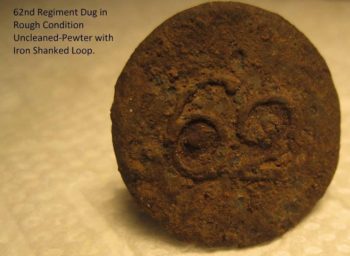
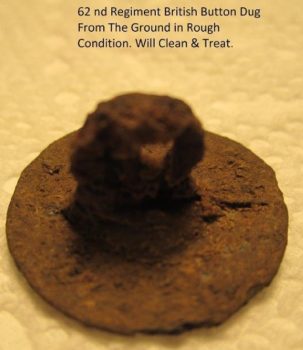
******* ******* *******

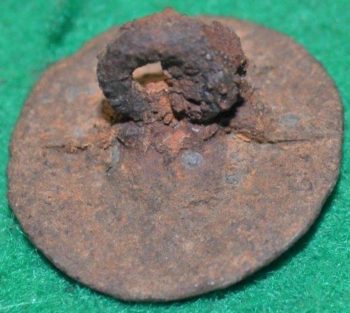
******* *******
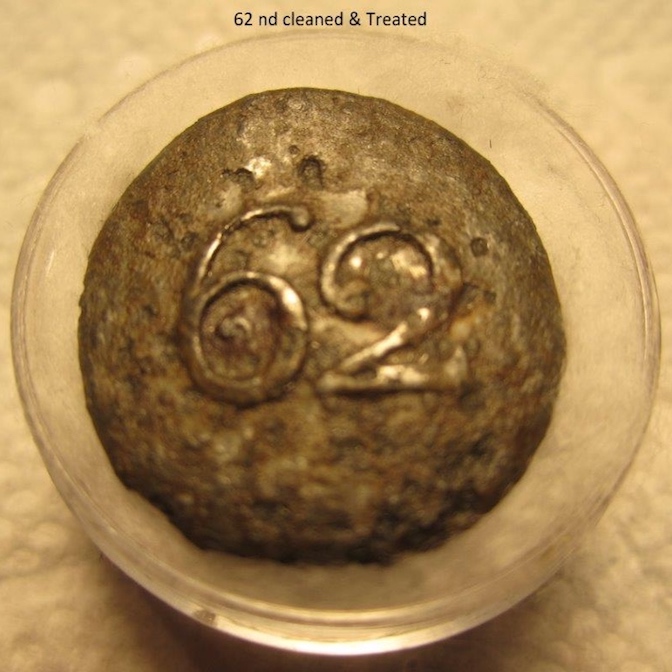
*******
Dales Promised Article:
Primers are special paints designed to keep out the Air while serving as Bridges to tougher more durable finishing paints.
COATING CHOICES THE VARIOUS METAL TYPES
————- Iron or Steel———-Brass, Bronze, Copper——-Galvanized Metal———–Aluminum
1. Oil Primer Yes NO Yes Yes
2. Alkyd Primer Yes Yes Yes Yes
3. Latex Primer Yes NO Yes Yes
4. Zinc Rich Primer Yes Yes Yes Yes
5. Zinc Dust Primer NO NO Yes NO
Part II Draft still in progress:
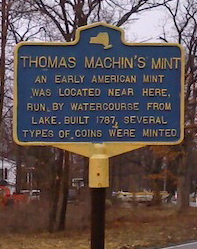
Who were the American Manufacturer’s that used the Engraved Steel Dies for Production
 There are a few specific coin makers who are attributed for some of the raw materials used in the construction and production of these inaugural and tribute buttons. We also have records along with excavated specimens that attribute specific or popular designs to certain states such as, New York, Connecticut, South Carolina, and Pennsylvania. Because England lost the war, and America’s failing support with the French War in 1793, we believe none of these inaugural buttons would have been offered for sale in England or France. These countries were selling Long Live The King buttons in 1789 for King George III, and King & Constitution political support buttons in 1793 for the war with France. So, in my opinion GWI’s or New Nation Tribute buttons would have only been sold here in America. Even though my New introduction of GWI 24 was found in England, I was able to attribute that to a specific person that was the son of one of the original engravers who was a military officer in Britain during post-colonial times. Just to note, there is only one button in 225 years, (GWI 24 Heraldic Eagle with Inverted Diamond shaped Indentees) that was excavated out of the United States in Northfolk, England. Otherwise, all these early patterns are inherent to the United States.
Finding out a specific person or manufacturer of a specific design or pattern is very difficult to discover. On the manufacturing side of our investigation, all we can do is find out who would have had the access to raw materials, or trace the origins of the materials used in the construction of these buttons. Fortunately for us there were some remaining manufacture’s records of ordered or supplied materials with dates. We know that both Pennsylvania and South Carolina obtained their copper from England, and that North Carolina got theirs from Switzerland. New York got their Brass, Bronze, and Copper from smelting down the old canons and mortars that were left over from the American Revolution. Most of these were left in the Newburgh, New Windsor, and West Point Area. The smelting process of canons and mortars is done by the action temperature of a furnace. The heat would part the Zinc from the Brass, and the Copper would be procured through the fire, and then poured into a mold for making a blank planchet. The Bronze planchets were made in a similar fashion. Once the Copper is procured from the smelting process, Tin would be added-in to make Bronze. Massachusetts obtained their metal from an old canon factory in Bridgewater. The factory still had the brass racks from the machines that were used to bore out canon barrels. The New Jersey artisans who made copper coins had several sources available to them. They were able to buy their Copper straight from local mines, and some was also purchased from Thomas Machins of New York, and a part of their supply was imported from England, who in-turn bought it from Sweden. Connecticut obtained most of their Copper from Granby-Simsbury Copper Mines. We also know that the Federal Government had tons of Raw Copper which was ear marked for coining in New Haven Connecticut, so a portion of this might have been indirectly available for buttons.
List of the manufactures who made George Washington inaugural & NNT buttons:
1) Thomas Machin & Co. Of New Grange, (Newburgh) New York: Records indicate that Machin Mills in New Grange (Newburgh) N.Y. was able to salvage the Bronze, Brass, and Copper by procuring the old Revolutionary War Brass cannons and mortars and smelting them down. T. Machins also furnished blanks for the coiners of Vermont and Connecticut as well in 1789.
2) Weatherlee & Co. of Boston, Massachusetts: They obtained their metal planchets by smelting the old Brass Racks from the machines used for boring out cannons. Records indicate there was an old Cannon factory located in Bridgewater.
3) Broome & Platte, Morris Cove and Westville, and Mark Leavenworth of New Haven, Connecticut: These three companies were able to get their metal from John Higley at Granby-Simsbury Copper Mines.
4) Walter Mould of New Jersey: Obtained his blanks from Thomas Machin & Co. in Newburgh, N.Y., and also furnished blanks to coiners of Vermont and Connecticut in 1789.
5) Harmon & Buel, Town of Rupert, Vermont: received it’s blanks from Thomas Machin of New Grange N.Y.
This is a List of George Washington Inaugural Button’s That Have Manufacturing Records of Production, but No Examples are Found:
01) GW in Oval ~ Pewter ~ 34mm.
02) Linked States ~ Pewter ~ 34mm.
03) Eagle, GW and Liberty Cap ~ Copper ~ 25mm.
04) Washington at Valley Forge ~ Tombac Style ~ 32mm. (Tombac engraved)
05) Washington, Warren and Marion ~ Copper ~ 33mm. (hand engraved)
06) Engraved Initials “GW” ~ Copper ~ 38mm.
07) Foliated Script “GW” ~ Copper 25mm.
08) *Silver Flan “GW” and Plow ~ Silver ~ 13mm.
09) *Washington in Star ~ Brass ~ 34mm.
10) Foliated Script “GW” and Liberty Cap ~ Copper ~ 25mm.
11) George Washington 1776 ~ Copper ~ 35mm.
12) *Vigilance-Cock-Rising Sun-Engraved ~ Tombac Style ~ 37mm.
13) “GW” and Eagle~ Copper ~ 25mm.
Closing Notes To Digger’s,
A visual inspection alone of a GW or a New Nation Tribute button can not give us it’s actual metallic make-up. A button’s metal content must sampled for a metal ratio composition test to determine what the actual composition is. This doesn’t mean that we can’t visually tell the difference between Brass, Copper, Bronze, Gilt, or Silver, but after being buried for the better part of 225 years, and the metal has succumbed to environmental decay and corrosion, we just cannot be 100% certain by looking at it’s color. If someone didn’t tell us they added Tin to Copper, how do we know that Black button isn’t Brass instead of really being Bronze? Plus even if they weren’t excavated, many GW were smelted from other fabricated diluted materials, so the metal purity percentage of each separated element would be a different ratio from each batch of planchets produced for blanks. So where does this leave us without testing? One can use their vast experience of handling metals over the years. One can formulate that Copper is a softer metal then brass, and can take an impression much deeper and clearer, or Bronze can be a certain array of colors that other metals just wouldn’t have. Other ways would be from written documentation of what the manufacturer said they were made of. Within my library pages you will be able to gain knowledge about the different aspects of buttons to help you formulate knowledgeable answers on your own, but nothing could be certain without a scientific metal composition test.
